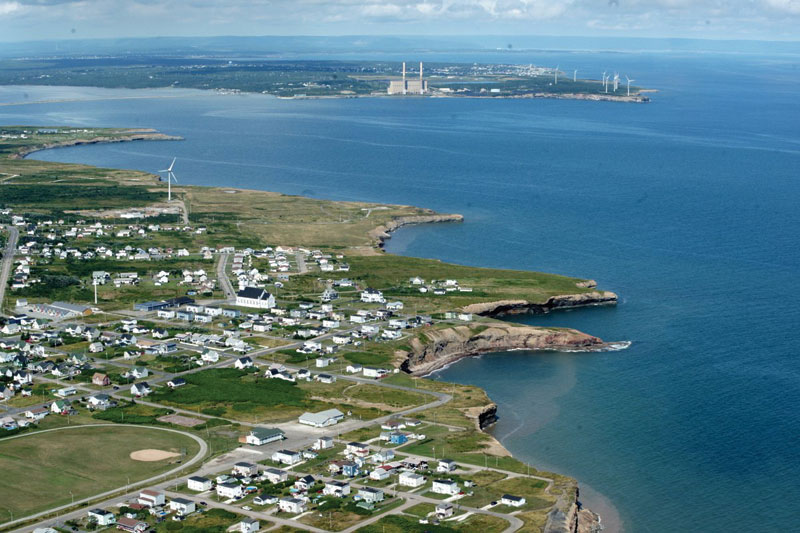Major expansion of Environment and Climate Change Canada’s capacity to predict and alert Canadians about coastal flooding
GATINEAU, QC – Coastal flooding is a regular occurrence along Canada’s marine coasts and poses a significant risk to the safety and well-being of Canadians. Increased impacts of coastal flooding are expected in the future due to global sea-level rise in combination with the increased intensity of extreme weather associated with climate change.
In May 2024, Environment and Climate Change Canada implemented a comprehensive coastal flooding prediction and alerting program that allows Environment and Climate Change Canada meteorologists to issue coastal flooding forecasts and alerts using both the probability and expected impact of an event. These forecasts provide emergency management organizations and Canadians with critical information about the risk of coastal flooding events before they occur, giving them time to prepare and act.
“Climate change is impacting the frequency and intensity of extreme weather, with implications for coastal flooding, posing a significant risk to the health and safety of Canadians,” said Steven Guilbeault, Minister of Environment and Climate Change. “With these expanded services, we will be able to provide Canadians and our emergency management partners across the country with critical, early information about the risk of coastal flooding, enabling better preparation and faster responses.”
Previously, Environment and Climate Change Canada monitored and issued coastal flooding alerts for regions along Canada’s Atlantic coast, but when fully implemented, the new project will expand its capacity to predict and alert for coastal flooding in new areas, including Canada’s Pacific and Arctic coasts, the St. Lawrence, and the Great Lakes.
With these expanded services, Environment and Climate Change Canada will assume responsibility for predicting and alerting for coastal flooding events across Canada, with the exception of Ontario, where provincial authorities will retain this responsibility, as well as Saskatchewan and Alberta, where there is limited risk of coastal flooding along the provinces’ lake shorelines.
“The Government of Canada is working to confront the devastating impacts of climate change, including the increasing frequency and severity of flooding,” said Harjit S. Sajjan, President of the King’s Privy Council for Canada, Minister of Emergency Preparedness, and Minister responsible for the Pacific Economic Development Agency of Canada. “The expansion of our capacity to predict and alert Canadians in advance of coastal flooding events represents an important step toward climate change adaptation and improves our response capabilities to better protect Canadians during severe weather events.”
Environment and Climate Change Canada will use the term “coastal flooding” as its default terminology when warning about these events rather than the previous term, “storm surge.” This change in terminology more accurately describes this weather event and clearly communicates its potential impact on Canadians, though Canadians in some provinces may continue to see “storm surge” used in alerts.
The safety of Canadians is our top priority. Environment and Climate Change Canada works continually to optimize its weather and climate monitoring networks to ensure Canadians are provided with accurate and timely information to enable informed decision making.
Canada’s National Adaptation Strategy outlines goals, objectives, and targets to reduce the risks associated with climate-related disasters, improve health outcomes, protect nature and biodiversity, build and maintain resilient infrastructure, and support a strong economy and workers. This will protect our economy from shocks and help avoid some of the rising costs of extreme weather.
Quick facts
- While the technology needed to predict and alert for coastal flooding across the country has been operational since May 15, 2024, complete regional implementation of the new products and services will take time.
- Coastal flooding is a regular occurrence along Canada’s coasts, the St. Lawrence, and the Great Lakes. It can be caused by storm surge, large waves, and high tides. Storm surge happens when the wind associated with a major storm pushes water onto the coast. This may damage coastal infrastructure and threaten human health and safety. Large waves associated with the storm may drive additional water onshore, worsening impacts.
- Climate change brings more intense rainfalls, which are expected to increase urban flood risks, and coastal flooding is expected to increase in many areas of Canada due to local sea-level rise. The intensity of the strongest hurricanes is also expected to increase, though an increase in the total number of tropical cyclones globally is not expected.
- Under the 2019 Emergency Management Strategy for Canada led by Public Safety Canada, Environment and Climate Change Canada received $4.94 million over five years for the coastal flooding prediction and alerting initiative to develop a national prediction system for coastal flooding, in response to the growing frequency and severity of storm surge.
- To support the National Adaptation Strategy, the Government of Canada Adaptation Action Plan (GOCAAP) outlines federal action on climate change adaptation. With over 70 actions, the Action Plan represents the federal contribution to achieving Canada’s climate change adaptation goals.
- This initiative is among many federal efforts under the GOCAAP to prepare Canadians for, and protect them from, the effects of extreme weather events and climate-related disasters.
- The latest forecasts and severe weather warnings are available through Environment and Climate Change Canada’s weather website, the WeatherCAN app(available for Android and iOS devices), Weatheradio, and Hello Weather(1-833-794-3556).









